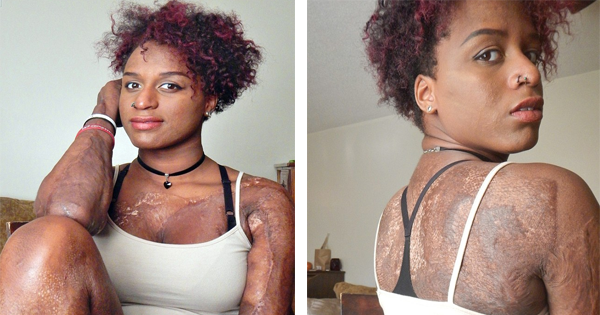Advertisement
In July 2010, Alexandra Hollingsworth, an 18-year-old teenager from Memphis, Tennessee, was at home playing a game with her cousin and brother when her mother was out.
They’d learned the dangerous game from some of their friends and were now continuing it themselves – using matches to ignite alcohol. When they’d previously played with their friends, they’d always been able to put out the small flames.
This time, however, things got out of control.
There was a sudden explosion, and Hollingsworth felt like she was suddenly being swallowed by “hot, orange light.” She realized a moment later that she was on fire.
Hollingsworth ran to her mom’s room, trying to remove her flaming clothes without having them burn her face. Her cousin was unharmed, but her brother also suffered burns as he attempted to put out the flames ravaging his sister’s body.
“The entire house was covered in soot and smoke and the floor of my mom’s room had caved in,” Hollingsworth recalled. “I felt like my skin and eyelids were melting. As we ran out of the house, I caught my reflection in the mirror. My arms were in shreds and skin was hanging off me.”
Both Hollingsworth siblings were taken to the hospital to have their burns tended.

Alexandra had burned 52% of her body, including her arms, stomach, back, thighs, hands, and face. Her brother had burned 18% of his body to his chest and inner arms.
A few days later, Alexandra woke up in the hospital with a tube down her throat, suddenly realizing that she was living in someone else’s skin.
The doctors had grafted skin on her elbows, legs, thighs, back, arms and stomach. Some of the skin had been taken from Alexandra’s legs, but much of it was from deceased donors. “At first, it was weird because it was much darker than my skin tone,” Alexandra explained, “but my body’s not rejecting it and I don’t think about it unless someone asks.”
It took Hollingsworth several weeks to return to her usual levels of awareness, and she ended up staying in the hospital for about two months to properly recover.
For about three years after the accident, Hollingsworth was depressed, unwilling and embarrassed to have others see her with her grafted skin. “I just wanted everyone to leave me alone.”

When Hollingsworth’s hair gradually began growing back in – the doctors had had to shave it off to check her scalp for burns – she began to feel more like herself again. Now, she feels like she’s in a good place where she can think of her scars as “interesting” rather than “hideous.”
Hollingsworth is now volunteering as a counselor for burn survivors. “I can really empathize with kids and love working with them. Knowing what I went through definitely helps them to trust me.”




